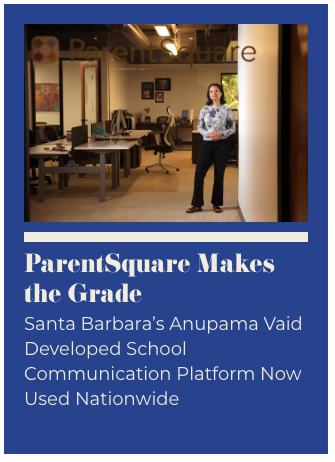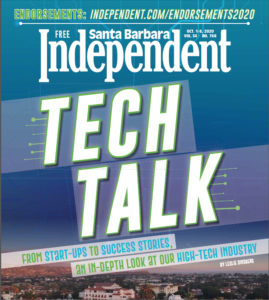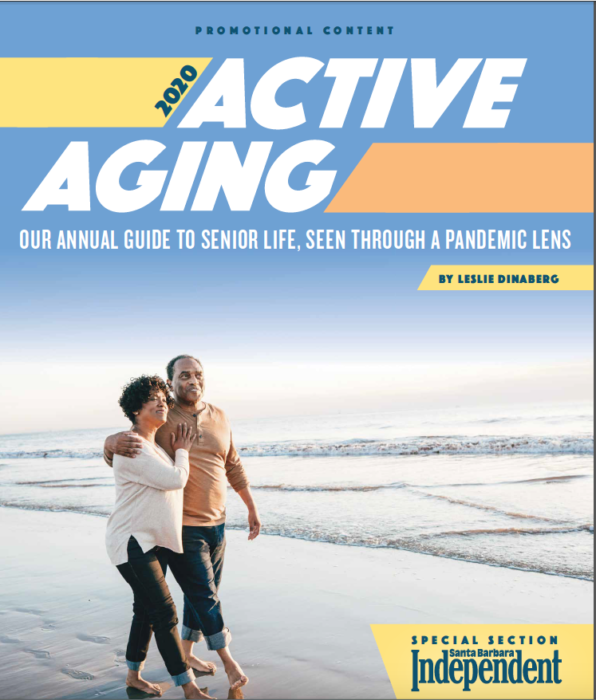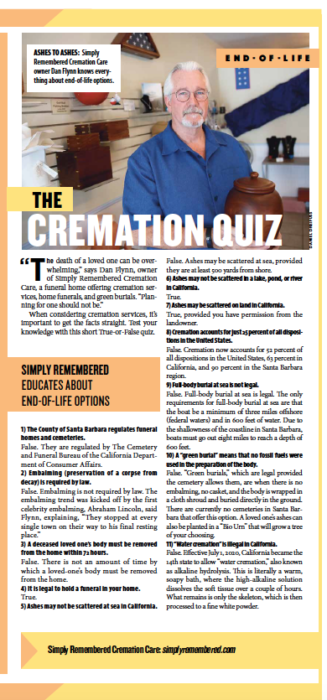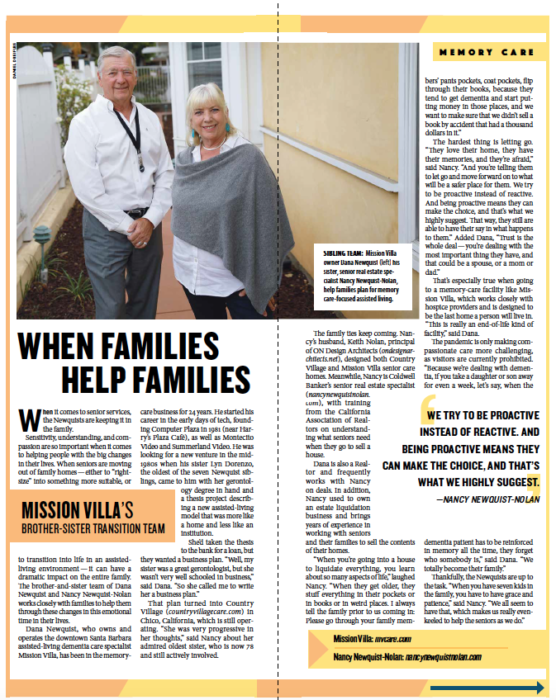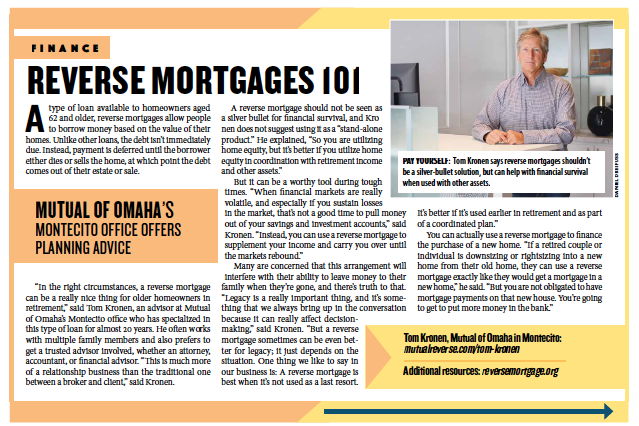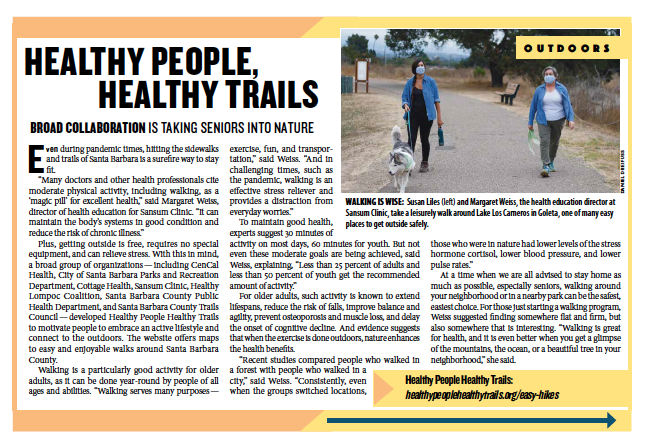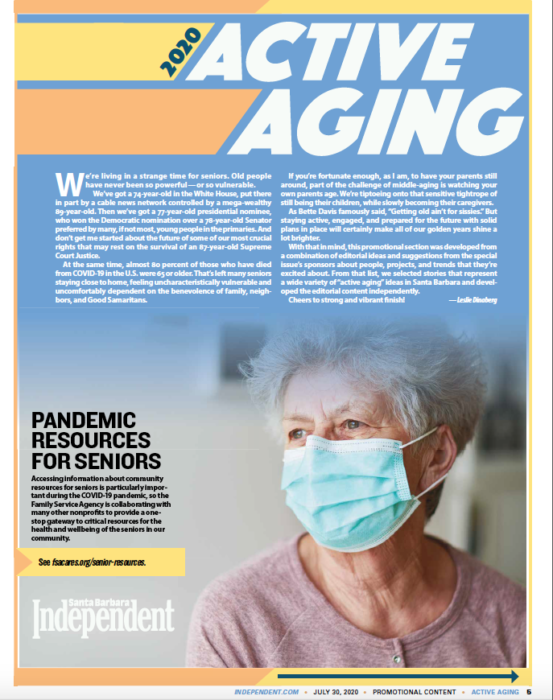
Aging With Grace and Humor, from Santa Barbara Independent, Active Aging Special Section, July 30, 2020.
Etta “Honey” Miller Celebrates 105th Birthday
Even over the phone (an unfortunate pandemic restriction), Ettna Miller is full of vim and vigor. In early July, she celebrated her 105th birthday with a small gathering at Vista del Monte, where she has resided in her own apartment for the past year.
Her “baby brother” Dr. Dean Vogel, a longtime Santa Barbara resident, also lives there and moved “Honey” to the facility after she broke her back at home in Indiana.
When she’s not entertaining her caregivers and fellow residents with tales of her storied life, Honey receives a variety of rehabilitative therapies through VNA Health’s home health-care services. A physical therapist, occupational therapist, and case manager bring therapies directly to her home, working with her to improve her strength through various activities and fall-prevention strategies.
Here are some highlights from a recent chat with Honey and her caregiver, Carolina Navarro. Their responses have been briefly edited for clarity.
Happy Birthday, Honey. Do you have a favorite birthday memory?
Ettna “Honey” Miller: My 100th birthday. There were well over 100 people at that birthday party. I don’t know if I ever greeted all of them or not. Everybody was running around with a camera. There were a lot of little kids there and everybody wanted to get pictures for show-and-tell.
How was your 105th birthday?
EHM: That was really a lovely affair. My brother Dean did the arranging. Of course, we were all quarantined, so there were limits. They arranged a new area with outdoor seating, and they had beautiful umbrellas. They had tables that seat nine, and they seated three people per table. We were only allowed to have 10 people at the luncheon. It was really lovely. We had dinner and we had birthday cake.
Carolina Navarro: For her 105th birthday, Honey received well over 50 birthday cards in the mail. She was still getting greeting cards yesterday in the mail.
EHM: It was amazing, people sent cards that I hadn’t talked to for years. People I hadn’t even thought about. One lady said she knew a friend of hers that went to high school when I did, and so she said that she wanted to send a card. I’m amazed at these people, how nice that it is to hear from them.
It’s very special to live to 105. You’ve seen things that most of us haven’t.
EHM: I’ve been blessed in so many ways.
Are you the oldest person you know?
EHM: I don’t know anyone older than me.
How old is your brother?
EHM: He is 87; let’s see, he was born in 1933. I was graduating high school when Dean was born. I didn’t even know my mother was pregnant. I said, “Well, that’s keeping a girl pretty dumb, isn’t it?”
Did you have other brothers and sisters?
EHM: There were nine of us, five boys and four girls. We had two older sisters that were bit by rattlesnakes and one of them died, and the other one, Vera, they were able to get her to a doctor and she survived and lived to be 90 years old. We lived in a prairie, in the rural area of South Dakota, a place called Lemmon [current population 1,227].
Where did you live after Lemmon?
EHM: Well, my father was born in Germany, and he came to the United States when he was about 16, and his mother wanted to keep him out of the German army. Then she wanted him to come over to Germany again and learn the cheese manufacturing business.
We only had a three-month visa, so we had to come back to the states. We went over in 1926 and came back in 1926. The big ocean liners were something great back then.
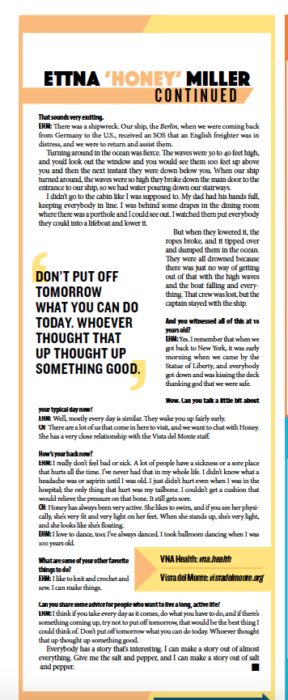
That sounds very exciting.
EHM: There was a shipwreck. Our ship, the Berlin, when we were coming back from Germany to the U.S., received an SOS that an English freighter was in distress, and we were to return and assist them.
Turning around in the ocean was fierce. The waves were 30 to 40 feet high, and you’d look out the window and you would see them 100 feet up above you and then the next instant they were down below you. When our ship turned around, the waves were so high they broke down the main door to the entrance to our ship, so we had water pouring down our stairways.
I didn’t go to the cabin like I was supposed to. My dad had his hands full, keeping everybody in line. I was behind some drapes in the dining room where there was a porthole and I could see out. I watched them put everybody they could into a lifeboat and lower it. But when they lowered it, the ropes broke, and it tipped over and dumped them in the ocean.
They were all drowned because there was just no way of getting out of that with the high waves and the boat falling and everything. That crew was lost, but the captain stayed with the ship.
And you witnessed all of this at 10 years old?
EHM: Yes. I remember that when we got back to New York, it was early morning when we came by the Statue of Liberty, and everybody got down and was kissing the deck thanking god that we were safe.
Wow. Can you talk a little bit about your typical day now?
EHM: Well, mostly every day is similar. They wake you up fairly early.
CN: There are a lot of us that come in here to visit, and we want to chat with Honey. She has a very close relationship with the Vista del Monte staff.
How’s your back now?
EHM: I really don’t feel bad or sick. A lot of people have a sickness or a sore place that hurts all the time. I’ve never had that in my whole life. I didn’t know what a headache was or aspirin until I was old. I just didn’t hurt even when I was in the hospital; the only thing that hurt was my tailbone. I couldn’t get a cushion that would relieve the pressure on that bone. It still gets sore.
CN: Honey has always been very active. She likes to swim, and if you see her physically, she’s very fit and very light on her feet. When she stands up, she’s very light, and she looks like she’s floating.
EHM: I love to dance, too; I’ve always danced. I took ballroom dancing when I was 100 years old.
What are some of your other favorite things to do?
EHM: I like to knit and crochet and sew. I can make things.
Can you share some advice for people who want to live a long, active life?
EHM: I think if you take every day as it comes, do what you have to do, and if there’s something coming up, try not to put off tomorrow, that would be the best thing I could think of. Don’t put off tomorrow what you can do today. Whoever thought that up thought up something good.
Everybody has a story that’s interesting. I can make a story out of almost everything. Give me the salt and pepper, and I can make a story out of salt and pepper.
VNA Health: vna.health Vista del Monte: vistadelmonte.org
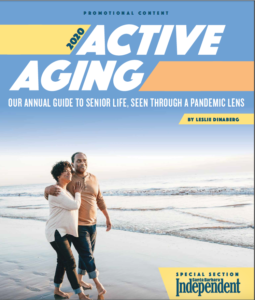
Originally published in the Santa Barbara Independent on July 30, 2020. To view the Active Aging Guide to Senior Life, Seen Through a Pandemic Lens, click here.

